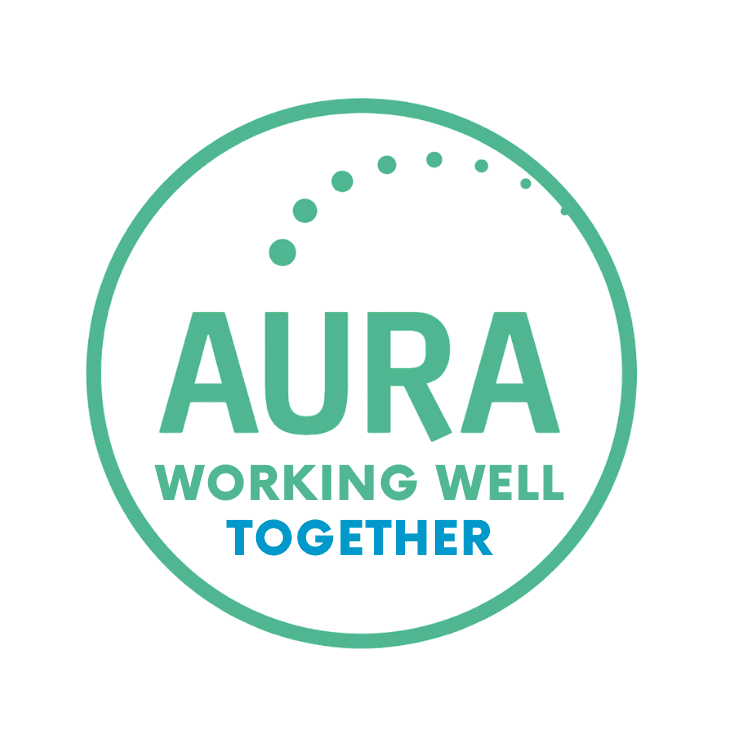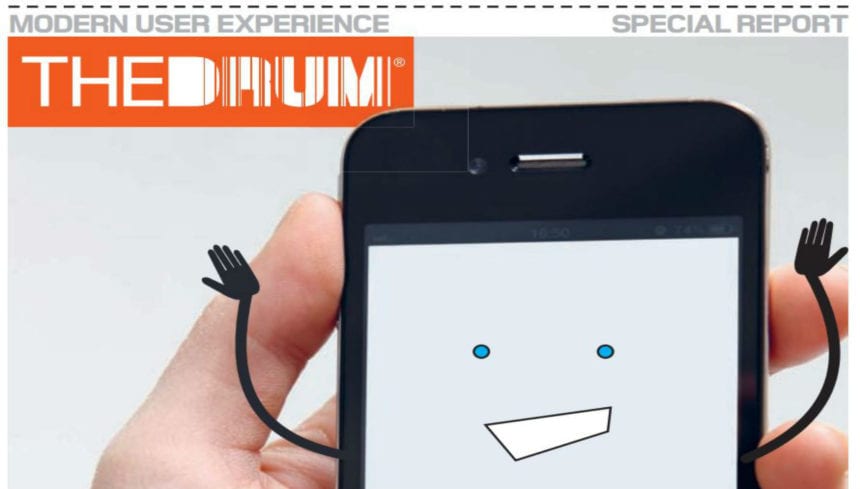The UX work we do is often invisible, but its impact is undeniable. Whilst this makes our roles at Border Crossing UX hugely fulfilling on a personal and professional level – it does make marketing our work and the outcomes we have achieved hard. So how can we market our impact when confidentiality is key? Our answer: our new video: We are Border Crossing UX.
The challenge(s) of marketing a micro UX consultancy
Over the last 15 years there has been one continuous challenge we have had at Border Crossing UX:
“How might we market our services and the value that they provide to our clients when we often work in a sensitive and confidential environment?”
Additionally, anyone who works in sales and marketing knows you need some big sexy numbers to be compelling and prove the value of the work that you have done. But anyone who works in UX or research knows it can take 12-24 months to collate any meaningful data to measure ROI.
We also strongly believe that if you are creating, publishing and storing content then it has to add some value to you or your audience. The carbon cost of creating, storing and delivering content has to be considered when we are in the midst of a climate crisis.
Therefore, we always evaluate any piece of marketing content to see if its value is worth the carbon cost of it existing. So, any marketing content needs to add value, not just create additional noise.
The final piece of the challenge is that as a micro company who loves working with clients on their challenges. We as an organisation tend to have very little time left to market our own services. Therefore, every action we take has to add value today as well as helping us build a better tomorrow.
So, that almost leaves you with the question of why do any marketing at all, let alone create a video which is more carbon heavy than a simple text post?
Why we created this video?
As a micro company, we are fortunate to have benefitted from organic growth through word of mouth recommendations, in person networking and public tenders.
When we do meet new people or they reach out online they are often impressed by our 15 years of experience and expertise and our extensive client list. But they always ask: ‘Why have I never heard of Border Crossing UX before?’
And over the years there have been many responses from ‘We’re too busy for marketing at the moment’ or ‘We can’t really talk about a lot of the work that we do’. And then often follows a wave of advice or if they have reached out to us directly – a pitch.
So, after my latest encounter of this nature I decided that we really needed to find a way to rapidly tell people who we are, what we do and why that matters without adding to the general noise on the internet, breaking the budget for marketing or making the environment pay for a vanity exercise.
My proposed solution: A short retort video that tells people who we are, what we do, and why people should care.
The video: inception to prototype
As mentioned, we are a constrained company in terms of capacity for internal work. Plus we try to deliver the most impact to our target user with the least impact on the environment.
So, I was mulling this problem and solution over a week in early February and during the advert break of a Six Nations match inspiration hit. I had the script all in my head for a short video and so I grabbed a pen and my trusty notebook and wrote the first draft of the script in 2 minutes. Sometimes, when you write something down you instantly feel that it is right, maybe not 100% ready but you can literally feel that you have expressed exactly what you wanted to say. And with this script I instantly knew that this was the short, succinct and polite answer to that burning question: Who are you and why haven’t I heard of you?
But a sassy script on paper does not make a video. So, the next week I wanted to prototype the video and see what could be done using typography, sound and limited imagery (it is the images and the video footage that takes the most carbon). Hence a prototype of the video was put together on Biteable to see if we could create something simple and impactful in a rapid fashion. Within 2-hours of playing with different colours and transitions a draft storyboard of a 60 second video was put together that I could show the rest of the team to critique and improve.
The actual video brief
The storyboard – like any prototype – was an excellent way to showcase my vision for the video and also how it could work. With the team aligned to the vision and what we were working towards we then listed all the desired outcomes, the constraints that we had and additional requirements to be considered. We combined all of that into a short brief that we could all refer to throughout the project:
Purpose:
To answer the questions ‘Who is Border Crossing UX, what do you do and why have I never heard of you?’ with a short, impactful piece of content that could live on all our online channels that showcased our brand essence.
Desired outcomes:
Increased brand awareness, positive brand sentiment and reduction in the number of interactions of people asking why they have never heard of us.
Specific requirements and constraints:
- It should be simple, impactful and memorable.
- It should apply the ‘Jerry Springer Rule’ where the audience should be captivated and intrigued to watch it whilst scrolling through channels, even with the sound off.
- It must not take more than 1 minute to consume
- It must be representative of our brand in all ways.
- It should showcase our skills.
- It must not divulge any sensitive information.
- It should make our clients feel proud to work with us, and make other people want to work with us.
- It must be original content.
- It must be the lowest carbon cost for the type of asset.
- It should be created and launched around our client projects over a three week period.
- It should be a team collaboration to ensure that everyone is represented and feels that this content showcases their work as individuals as much as our work as a team.
Creating the video – purposefully without AI
Once we had all agreed on the brief we started to work on ideas for the different scenes, the transitions and refining the script. At this stage we could have fed all this information into an AI generator like Mid Journey and it would churn it out and we could just iterate using AI. But we decided not to for several reasons. The primary reason is that the long term cost of AI to the planet is unclear. However, it can be said that creating an image in AI is the equivalent of throwing a jug of portable water onto concrete. Now with AI, each iteration will have that cost or more. As we have the skills in-house to create video and animation the only reason to have used AI would have been speed. Therefore when weighing up the cost to the planet vs the cost of using humans and the tools already in our suite we decided that for this instance AI was not the responsible approach.
Instead we moved the storyboard over into Adobe Premier Pro and started working on the timing of the scenes. It was really apparent where the script needed to be tighter and where there was repetition. So, we took a George Orwell approach to the script and stripped out any word that was superfluous to the point that was being made. Following the Orwell approach we applied the Armando Ianucci approach to make it ‘faster, better and funnier’, though we did drop the latter and did not add in any new swear words.
Whilst refinements to the script were being done, experiments with typography, transitions and imagery were being done. We agreed as a team that to showcase our true information architecture and design skills that we would focus on the words and how they display and interact on screen, limiting imagery to the most important element of the video – the people we create experiences for. This was a great route to take as it meant that we can also reduce the carbon impact this way.
The final component was the music. We knew that we wanted to have something that was immediately grabbing and would bounce along with the words. We also all have a lot of love for bass music and agreed that taking a hip hop type vibe would be the right feel for this type of video. We shortlisted 10 tracks from Artlist and then played each with the video scenes to see what worked best and there was a clear winner: NEXT ONE – Instrumental Version. A song by Frank Bentley, Anthony Mareo, Wav Haven
Getting it from good to great
Now we had the script, the scenes and the music all we needed to do was tie it all together. It sounds a lot easier than it is. Trying to get your words to line up to the beats and bassline and get the right transition at the right point took up the majority of the time it took to create the video.
There were numerous iterations and feedback sessions where things just felt half-a-second out of whack. It feels like an endless task but thanks to Calum and Scott’s perseverance and creative thinking the final polish of the video not only worked well from a functional perspective, it also felt right to us all.
I am not going to lie, I actually cried when I saw the final cut as I was so proud of what we achieved in such a short time but also what we have achieved together for the last 15 years. It was like we have a 45s overview of all the hard work, collaboration and outcomes we have achieved together. And to me that is a beautiful thing.
The next thing was to get it out there and start testing it with real people. So, as soon as it was ready we posted it across all our social channels. Initial feedback has been really positive and we are seeing some good organic reach.
Should we have used AI?
Having spent more time experimenting with various AI-native tools it is clear that we could have created a video like this end-to-end from brief writing to creating the exact music we wanted. But would it have been a better video then the one we produced? I don’t think it would.
There are several reasons why, including the environmental concerns, but the core one is that I am not sure it would have had the authenticity of brand and tone of voice as this video does. By nature Gen AI is going to churn out very similar content as what is already available online as that is its input data. But without creating our own small language model (SLM), I can’t see how it can create a piece of content that truly reflects the brand and the people.
Don’t get me wrong I am not an AI hater – I do use Gemini to help interrogate briefs, write headings for content, check the key themes in the documents I write, and I will probably get it to tidy up this post. I am literally amazed every week about how much better it is getting. But what I see is an amazing functional output that needs to be tweaked and tuned to really stimulate emotional engagement. When creating content like this it is so important that it feels right, not just looks right.
And that is not to say I wouldn’t consider using AI for future creative projects. I just think it should be an addition to the process, not a replacement. And the benefits must always be weighed against the costs.
The Return on Investment (ROI)
And in terms of ROI? Well – as mentioned at the top of the post. It can take 12-24 months to get enough meaningful data to measure actual ROI. But we have already seen value from the process and initial launch:
Galvanising the team experience
It was a great experience as a small team to be working on a project together, for ourselves. Collaborating on a clear goal as group is always a great reminder of why we work together and how our skills and points of view are complementary. Individually we do good work, together we do great work.
Positive feedback on all channels
So far all feedback has been really positive and we have seen good organic reach across platforms. We are seeing this as evergreen content so we will be looking at the performance changes over the next year and what impact any campaigns will have on the views and engagement.
Revitalising our passion for marketing
Perhaps the most important one is that it has reminded us that marketing can be a positive and fun thing to do. We just need to think outside the box from time to time and really put ourselves into the content. We have carved out additional time for us to invest in creative marketing to fuel our growth so do look out for more content coming your way!
For harder metrics and a full ROI assessment – come back in 12 months and see if we have any measurable impact in terms of brand awareness or a change in our initial conversations!
Want to learn more about Border Crossing UX and working with us?
For more information about our work and how we can help you email: Esther@bordercrossingux.com


